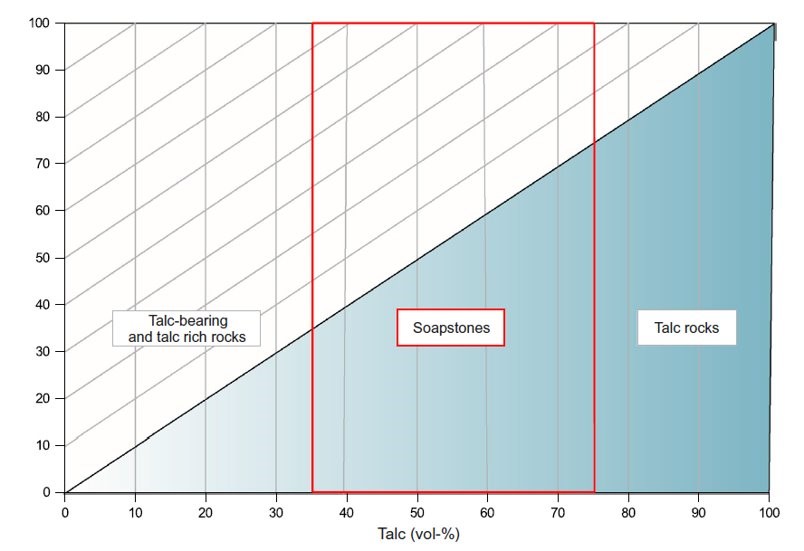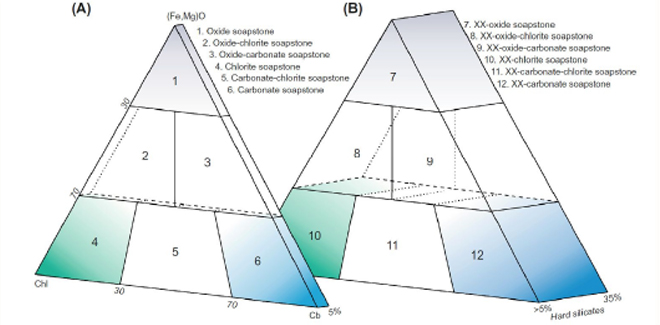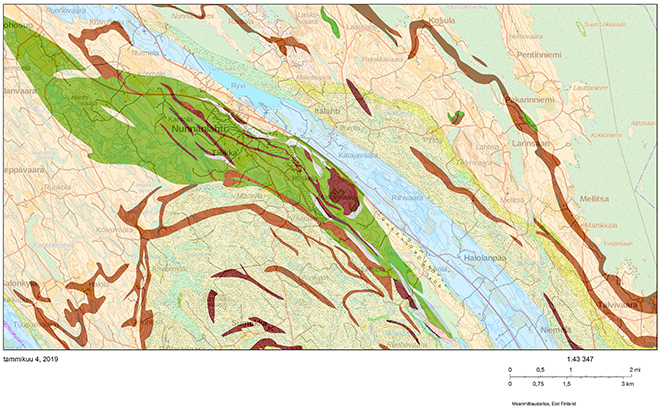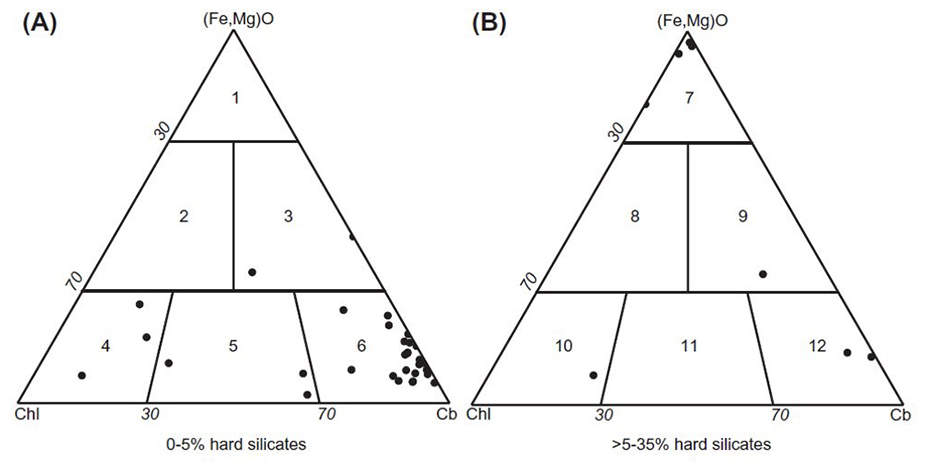From soapstone to soapstone types
Natural stones that are easy to carve due to their rather high talc content are in general called soapstones. The fact that soapstone is suitable for use in fireplaces is based, in addition to talc, on other minerals and the structure of the stone.
Based on the mineral composition, an unambiguous and accurate classification and naming convention has been created for soapstone types.

Soapstone contains 35–75% of talc and the amount of hard silicates must not exceed 35% (e.g. serpentine and amphibole). In addition to talc, soapstones contain other minerals, which can be different carbonates, chlorites, amphiboles, serpentines, pyroxenes, olivine, oxides and sulphides.
Once we know what amount of other minerals a soapstone contains in addition to talc, we can name the soapstone by the classification convention of soapstone types.

In the greenstone belt located in the Nunnanlahti area, there are several different soapstone massifs, which have numerous different soapstone types according to research. Even in the same deposit, several different soapstone types with different structures can be found. This calls for expertise in identifying and choosing the stone and building the product.


At NunnaUuni, we have put a lot of effort into researching and understanding soapstone types for as long as the company has been operating. NunnaUuni fireplaces are built with Mammutti soapstone, which is well-oriented magnesite soapstone.
Source: Huhta, Anne (2019) Diversity of soapstones: Classification and thermal behavior. https://www.oulu.fi/resterr/jutut/A39_Huhta.pdf. Retrieved: 22 March 2019.